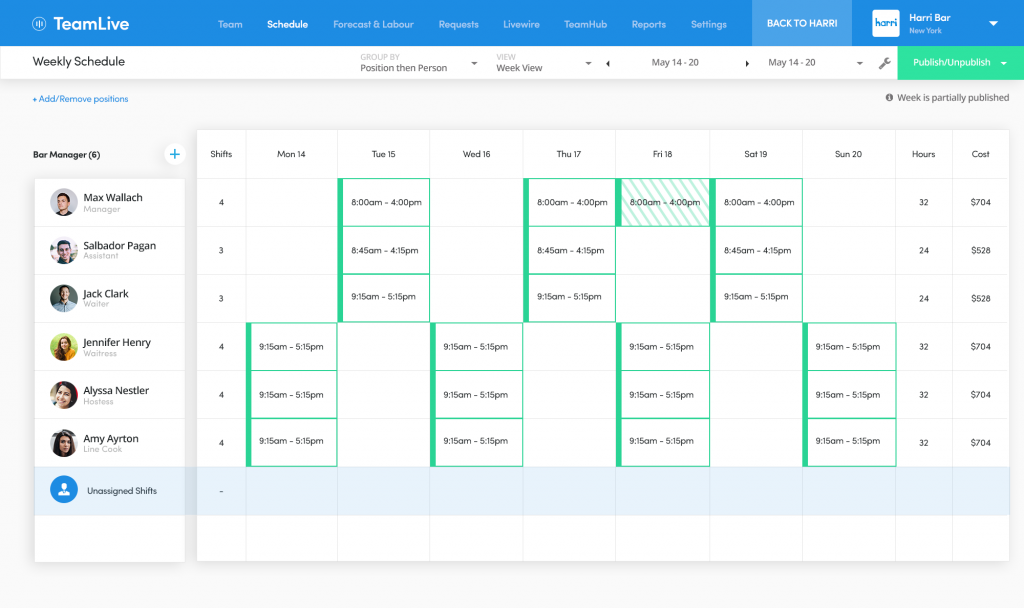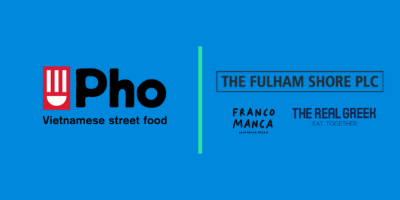Labor Optimization Without Compromise: Boost Efficiency and Profits in Hospitality

- By Harri Insider Team | July 4, 2024
Optimizing labor in hospitality boosts efficiency and profits by ensuring the right staff are in place, with the right workload, at the right times. This reduces employee burnout and enhances guest experiences, directly impacting the bottom line. For operators, the challenge is to optimize labor without sacrificing quality for both employees and guests.
Predicting Customer Demand and Managing Workload
Operators face the challenge of predicting customer demand accurately to avoid both overstaffing and understaffing. They also need to manage employee workload to prevent burnout while maintaining high service standards. Providing continuous, tailored training without disrupting operations adds to this balancing act, all while contending with rising food and labor costs.
Leverage Key Metrics: Sales Per Labor Hour (SPLH) and Covers Per Labor Hour (CPLH)
Operators need robust data to optimize labor effectively. Detailed metrics on customer demand, employee performance, and shift efficiency enable precise scheduling and workload management.
One key metric is Sales Per Labor Hour (SPLH), calculated by dividing total sales revenue by total labor hours worked.
Sales per labor hour (SPLH) = Total sales revenue/total labor hours worked
A higher SPLH indicates better efficiency in labor use, leading to higher profits. For example, a bakery generating $2,000 in sales with four staff working a combined total of 16 hours results in a SPLH of $125. In contrast, a lower SPLH during less busy periods, highlights the need for strategic scheduling. Forecasting SPLH helps businesses plan staffing around peak periods, using projected sales data to maximize efficiency and profitability.
Improving SPLH involves several factors, including optimizing staffing levels, training employees on sales techniques, focusing on high-margin products, and leveraging technology for efficiency.
For hospitality businesses, an alternative metric, Covers Per Labor Hour (CPLH), measures the number of customers served per labor hour, providing a more accurate productivity assessment given the variability in sales. This is calculated similarly to SPLH, but uses the number of covers instead of sales revenue.
Covers per labor hour = Covers (a cover being one customer served)/total labor hours
Both metrics are essential for understanding and enhancing labor productivity, ultimately contributing to better financial performance and customer satisfaction.
Jim Taylor, Founder of Benchmark Sixty, shared his transformative experience with using CPLH on the Restaurant Growth Show Podcast: “It changed my entire career after 20 years of running restaurants the same way. If I know how many covers per labor hour my restaurant is going to serve, and we can do that consistently, it means my guest experience is more consistent than it was,” Jim explained. “If things are up and down, my employees have a more consistent experience. I can protect the workload because if it goes too high, I know that’s damaging for the team.”
Jim further illustrated this with a practical example, explaining that aiming to serve five customers per hour on average ensures efficiency. Serving six customers per hour can overwhelm the team, while serving only four means not maximizing potential revenue. If labor costs remain high despite hitting the target, it could indicate lower-than-expected customer spending or increased wages due to training or overtime. This clarity helps pinpoint where adjustments are needed.

Optimizing Scheduling Without Sacrificing Quality
Optimizing scheduling based on data is crucial for maintaining operational efficiency without sacrificing service quality. Here’s how to achieve this balance:
- Analyze Historical Data: Examine historical sales and labor data to identify patterns and peak periods. Metrics like SPLH and CPLH will help you understand when your business is busiest and when it is slower.
- Forecast Demand: Use this data to predict future demand. Predictive analytics can help anticipate busy periods and quieter times, allowing you to schedule staff appropriately.
- Align Staffing with Demand: Schedule more staff during peak periods to maintain high service levels and fewer during slow times to control labor costs. Ensure your best-trained staff are scheduled during high traffic times to handle the rush efficiently.
- Flexible Scheduling: Implement flexible scheduling practices that can adapt to real-time changes in demand. On-call shifts and flexible end times allow you to respond to unexpected increases in customer flow without compromising quality.
- Employee Preferences: Incorporate employee preferences and availability into your scheduling process. A happy, well-rested workforce is more productive and provides better service. Use scheduling software that allows employees to input their availability and request shifts.
- Continuous Monitoring and Adjustment: Regularly monitor SPLH and CPLH metrics to evaluate the effectiveness of your schedules. Make adjustments based on real-time data and feedback from employees and customers.
- Leverage Technology: Utilize advanced scheduling and workforce management tools that automate scheduling, provide real-time data, and offer insights for continuous improvement.

How Harri Can Help with Labor Optimization
Harri offers a suite of tools designed to help operators optimize labor without sacrificing quality:
- Data-Driven Insights: Harri’s platform provides comprehensive data and analytics to identify inefficiencies and areas for improvement.
- Optimized Scheduling: Harri’s scheduling tools ensure that labor supply meets demand without overburdening employees, maintaining service quality.
- Employee Engagement and Feedback: Harri’s engagement tools capture real-time feedback from employees, allowing for timely interventions and support.
- Performance Management: Harri’s performance management features enable managers to monitor employee performance and address issues proactively.
Learn how Harri can help you optimize your labor management—schedule a demo today.




















